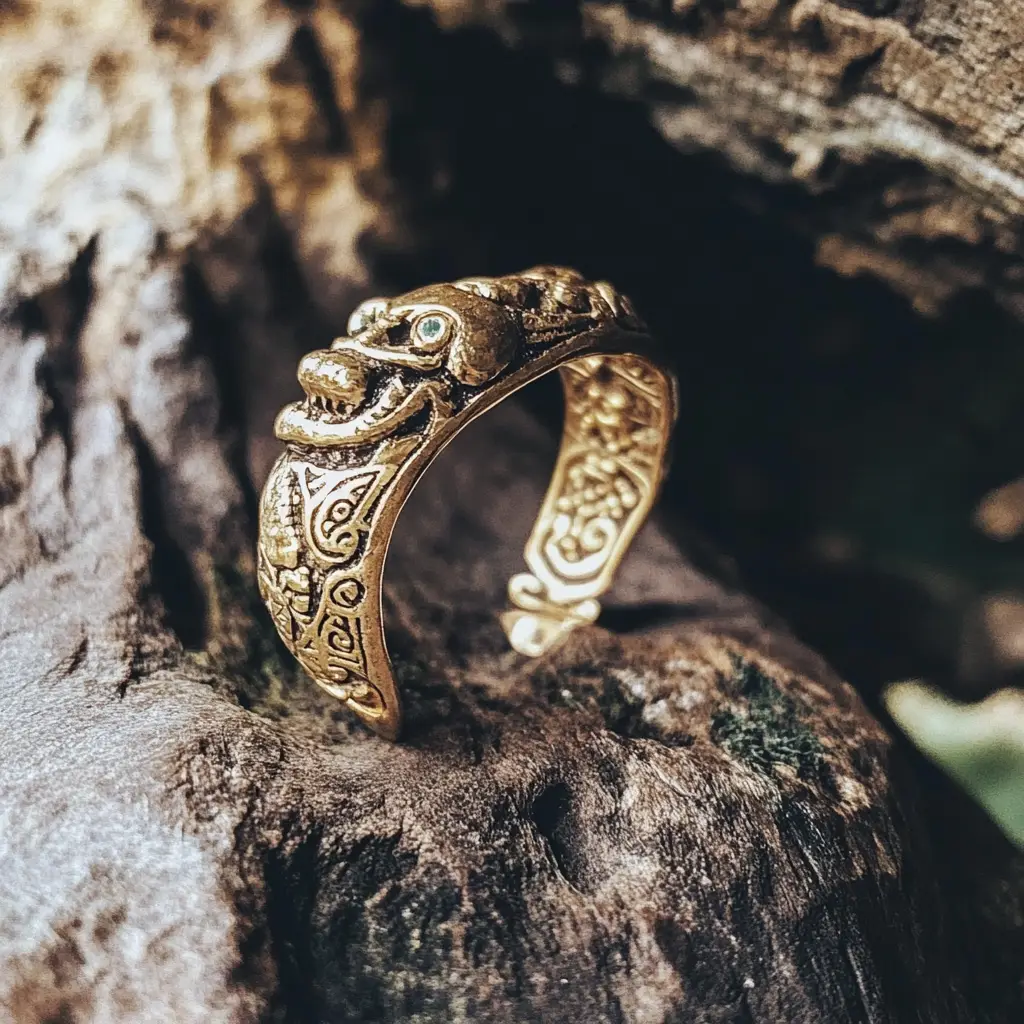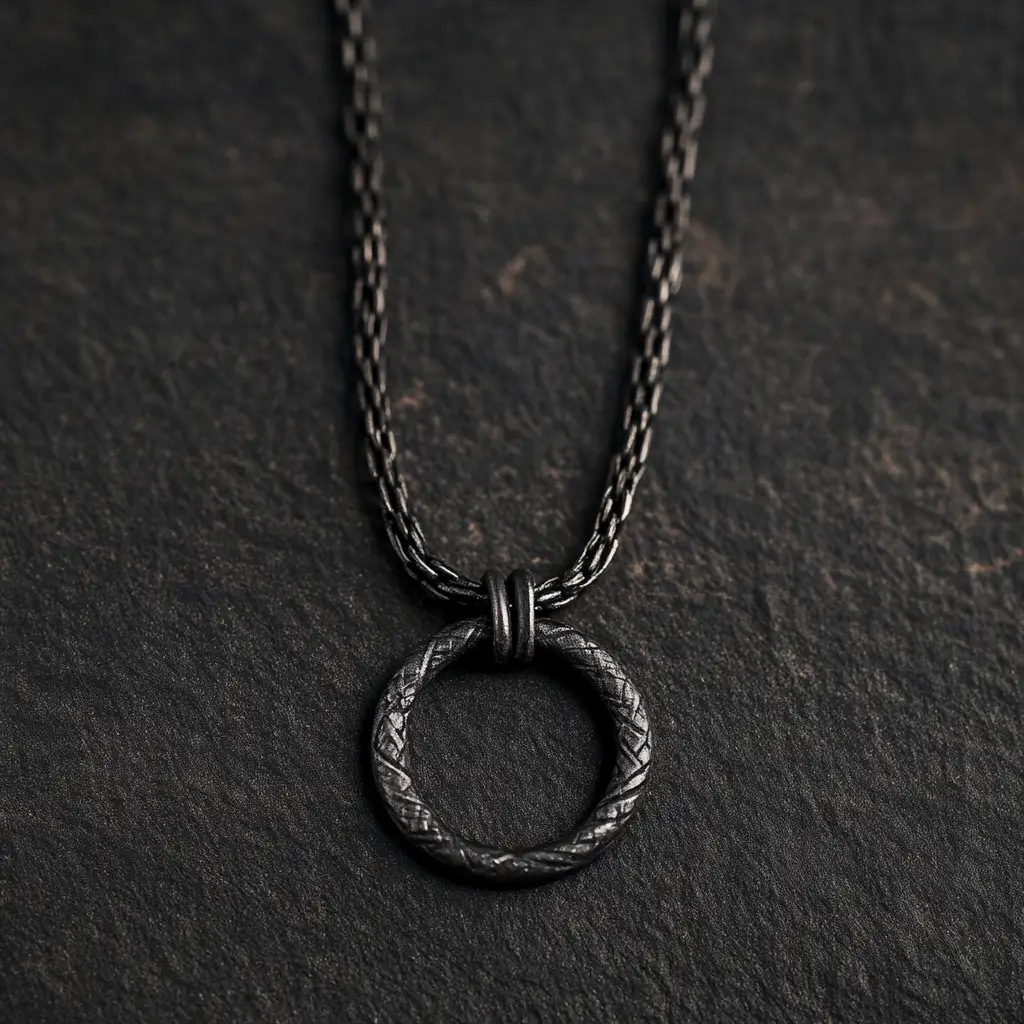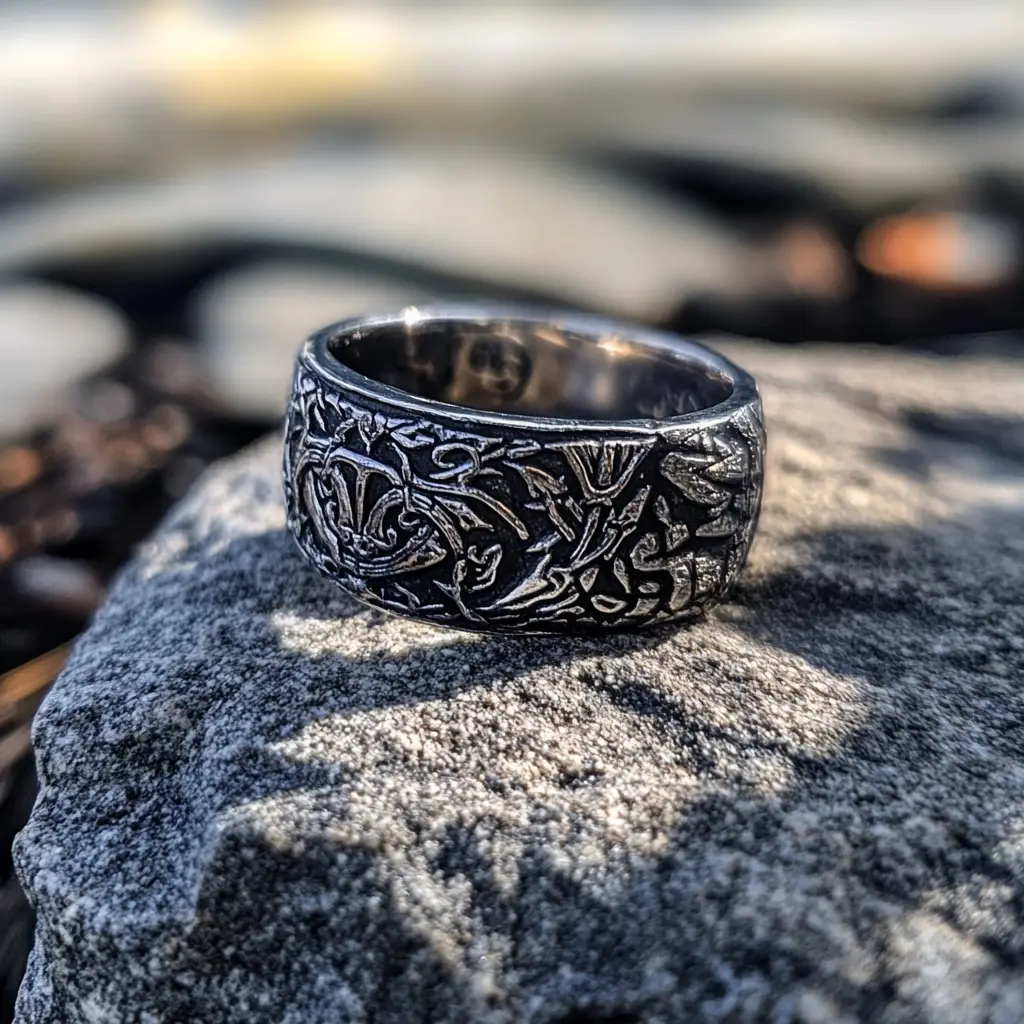Viking jewellery was an important part of Norse culture, serving as a symbol of personal wealth, social status, and protection, as well as a practical way to carry wealth in a portable form. Both men and women wore various types of jewellery, including brooches, arm rings, neck rings, and pendants, often decorated with intricate designs that reflected Viking art styles and Norse mythology.
Types of Viking jewellery
Brooches:
Brooches were particularly popular among Viking women, used to fasten clothing and displayed prominently on dresses and cloaks. They came in various shapes, including:
Oval or Tortoise Brooches: The most common, often worn in pairs by women to secure straps of aprons or dresses.
Penannular and Ring Brooches: Circular or open-ring designs, frequently used by both men and women.
Disc Brooches: Flat brooches with intricate patterns, often decorated with filigree, inlays, and animal motifs.
Arm Rings and Bracelets:
Arm rings (often called “oath rings”) were commonly worn by Viking men and women and could serve as symbols of loyalty or allegiance. Made of silver, bronze, or gold, these rings were sometimes twisted or woven, giving them a unique texture.
Arm rings could be plain or adorned with intricate patterns in the Viking art styles, such as animal motifs, runic inscriptions, and interlaced designs.
Neck Rings and Torcs:
Neck rings, or torcs, were worn as symbols of wealth and power, often crafted from precious metals. The torc was a band or a twisted collar that could range from simple to highly ornate.
Neck rings were sometimes adorned with animal head terminals, a nod to Viking art styles that often depicted creatures like wolves, serpents, and ravens.
Pendants and Amulets:
Viking pendants often held spiritual or protective significance and were shaped like symbols from Norse mythology:
Thor’s Hammer (Mjölnir): The most iconic Viking amulet, believed to offer protection and strength. Mjölnir pendants were worn by both men and women, often as a sign of devotion to Thor, the god of thunder.
Animals and Mythical Creatures: Pendants featuring ravens (associated with Odin), wolves, and other animals symbolized power and protection.
Runic Amulets: Pendants engraved with runes or runic inscriptions were believed to hold magical properties, granting protection or luck to the wearer.
Finger Rings:
Finger rings were also popular, made from metals like silver and bronze. While not as heavily decorated as other jewellery items, some rings featured simple runic inscriptions or twisted designs.
Beads and Hair Adornments:
Beads, made from glass, amber, or semi-precious stones, were often strung into necklaces, attached to brooches, or woven into braids. These beads added colour and variety to Viking outfits.
Metal hair rings and beads adorned the hair, often seen in the hair braids of both men and women, enhancing their appearance while also indicating status.
Materials and Craftsmanship
Viking jewellery was made using a variety of metals, including silver, bronze, and occasionally gold. Vikings also used amber, glass, and semi-precious stones for decoration. Common techniques included filigree (twisted wire designs), granulation (small metal beadwork), and inlay (embedding one material into another). Jewellery was often decorated in Viking art styles such as Borre and Jelling, featuring geometric patterns, interlacing, and stylized animal designs.
Symbolism and Practicality
Viking Jewellery wasn’t just ornamental; it also had social, religious, and practical significance. For example:
Protection: Many pieces, like Thor’s hammer pendants, were worn for protection and luck.
Wealth and Currency: Silver arm rings or neck rings could be used as currency, often cut into pieces as payment. The practicality of wearing wealth allowed Vikings to travel without carrying bulky valuables.
Viking Jewellery today.
The craftsmanship and styles of Viking jewellery continue to influence modern jewellery design, symbolizing strength, resilience, and a connection to nature and mythology. Viking-inspired jewellery remains popular today, celebrated for its historical significance and artistic beauty.



